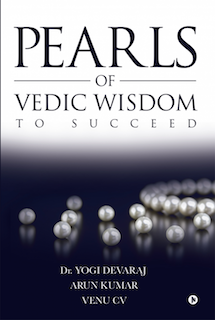Ashrama Upanishad exclusively discusses the Four Ashramas (age-based life stages) and they are also mentioned in Jabala Upanishad (4.1) and Yajnavalkya Upanishad (1.1). The Four Ashramas are Brahmacharya (student life), Grihastha (household life), Vanaprastha (retired life) and Sanyasa (renounced life).
Brahmacharya is the bachelor and celibate student life completely focused on education. A student is supposed to gain the knowledge of scriptures along with ethics, morals, values and virtues.
Grihastha is the married life and this stage represents most intense physical, sexual, emotional, occupational, social and material attachments. A human being is supposed to love the family, live the life cheerfully and fulfil one’s responsibilities as a parent, spouse, caretaker, breadwinner for the family, etc. Everyone is encouraged to pursue Artha (wealth) and Kama (desires) vigorously without crossing the boundaries of Dharma (righteousness). In this stage, Advaita Vedanta urges everyone to fully indulge in the world and enjoy all the worldly pleasures without violating any ethics or morality.
Vanaprastha is the stage where one should contemplate, decide and enter into retirement handing over all the responsibilities to the next generation. Having had a good education and the materialistic life experience in the previous two Ashramas (stages) respectively, in this third stage one is supposed to reflect on the life and gain wisdom. Whatever we considered important and cared for a few decades back which defined our individuality then are no longer considered important in the present. In the same way, whatever we are currently concerned with, which is defining our individuality in the present may not be considered important by us few years from now. Vedic Philosophy is asking us to understand this fact and develop the mental maturity, gain the wisdom to willingly lose the individuality by dropping the ego and become devoid and free of desires and self-centered thoughts.
Reflecting back on the previous Ashrama which is the Grihastha stage, as a householder we get all our comforts from the society. Starting from our everyday food, vegetable, refrigerator, TV, smartphone, car, each and everything we use, has been obtained from the society even though we might have paid for it. A large number of people have worked tirelessly around the year to provide us with all the comforts and they would continue to provide them.
In the Vanaprastha stage, we are supposed to start giving back to the society what we can. We can do charity, philanthropy, educate the poor, adopt a child, children or a village, work to provide health care, give motivational speeches, write to bring the awareness, etc. The idea is that in whatever way we find it convenient and comfortable it is imperative that we give something back to the society which has nurtured and nourished us all along.
Alas! this thinking escapes the materialistic human mind and the human being gets stuck permanently in the Grihastha Ashrama until the end. That means one does not stop working, wants to earn till the end, ignorantly refuses to become free from the hustle and bustle of life, wants to increase comforts and luxuries till the end, wants to increase the possessions and hoard them till the end, remains attached to the worldly objects till the end, remains possessed by the grip of selfishness till the end. This is nothing but not letting go of the ego and Advaita Vedanta calls this as Avidya (ignorance) and is the root cause of worries, pain and suffering not just for the individual but for the whole world as the selfish thoughts and deeds increase the distance between the haves and have-nots.
Sanyasa is the stage marked by renunciation of material desires and prejudices. With the experience and the knowledge gained, understanding the temporariness of the pleasure given by the worldly objects, it is about focusing on attaining Moksha (emancipation). It is about finally gaining the wisdom to succeed in dropping the ego and being in Silent Awareness. This is called Enlightenment or Self-Realisation.
See Also:


Post a Comment
Post a Comment